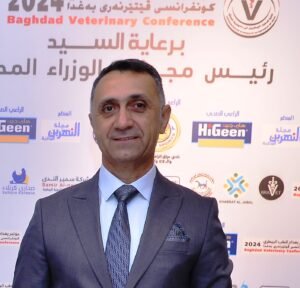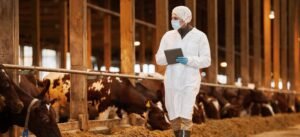Misinformation and Disinformation: A New Threat to Animal Health

Dr. Diyar Tayeb BARWARI
Veterinary expert
The global landscape of animal health and food risks today appears to be more complex and constantly evolving. Technological advances, climate change, globalization and demographic shifts are just some of the factors that make humans, animals and the environment they inhabit increasingly vulnerable to previously known and newly emerging risks (infectious diseases), whether natural, accidental or deliberate in origin
The World Organisation for Animal Health (WOAH) stated in a report published on its website, that in a rapidly changing and conflicting world, the need to combat falsehoods has become greater than ever. This is what stakeholders can do to address the fundamental challenges facing the animal health sector
Information overload adds another layer of complexity to the landscape. The current digital landscape has forever changed the way we access and consume news. Social media allows for the instant flow of information. At the same time, these digital technologies have led to a fragmented media landscape, giving online audiences a wide range of channels and outlets to access information. Against this backdrop, the ability of individuals and organizations to distinguish between fake and real news is constantly being tested
We mention this because we are among the people who follow and are influenced by social media and its various platforms, and who deliberately spread excessive information, most of which falls under the classification of (misleading, false).
So we can know that misinformation is inaccurate information, usually published without malicious intent and with the aim of attracting views and likes. As for disinformation, it is inaccurate or misleading information to the follower, and is created and published intentionally to harm governments, organizations or targeted individuals.
In addition, we can point out that disseminating information is one of the duties of the concerned institutions, whether governmental or non-governmental, and we can point out the weakness in this area in most governmental institutions, as access to correct and true information is not easy and simple.
The government institutions concerned with animal health, such as the Ministry of Agriculture in the Iraqi government, the Ministry of Agriculture and Water Resources in the Kurdistan Regional Government, the Veterinary Department in Baghdad, the General Directorate of Animal Wealth and Veterinary Medicine in Erbil, as well as scientific and academic institutions and companies working in this field, should publish all available information in a clear manner, including, of course, information on animal diseases (ruminants, poultry, fish, wild animals, etc.), how they arise and develop, and the extent of their danger and epidemic nature. The citizen must also be informed of the plans and work of these institutions in order to reduce these dangers and identify their weak points. Media messages must also be educational in some aspects in order to give a role to the ordinary citizen in this regard, and at least that would be by giving him the correct information and limiting the impact of misleading information on him and on society in general

This is a call to governments to carry out their duties in the field of transparency and dissemination of information in order to inform society about it. In this regard, we focus on the field of animal health, food and livestock



